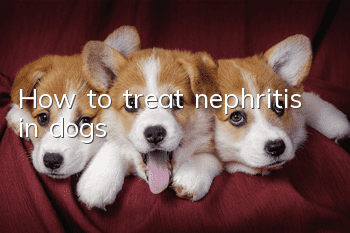Dog Behavior Analysis

For thousands of years, dogs and humans have had a close relationship. Although dogs rely on skills such as hunting, retrieving prey, guarding, and searching, there is no doubt that dogs are also full of friendship, trust, and understanding with humans.
Canine functions
In the wild, dogs make a living by hunting, and their various senses have been developed to adapt to this life. For them, hearing, vision, touch, taste, and smell are all important. But after years of selective breeding, today's pet dogs have changed the development of their various senses. For example, fast hounds (e.g., greyhounds, Afghan hounds, Salukis) hunt by sight and will lose interest in hunting if they cannot see their prey. Bloodhounds, Basset Hounds, and Beagles hunt by smell, and they will spend hours tracking scents from a week ago to find their prey.
All dogs have a very sensitive sense of smell. Their noses are as sharp as human eyes when it comes to distinguishing two similar individuals. The sense of smell is not only used to find food, but is also an important means of communication between dogs.
Dogs have good farsightedness, which is very useful in hunting. But most dogs cannot concentrate when looking at objects within 25cm. Dogs can recognize a variety of colors, including those that appear dull to them. Dogs can see better in dark places than humans. Although dogs are not very good at identifying details, they are very sensitive to moving objects. Maybe they won't notice a stationary object in the distance, but once the object moves, the dog will immediately detect it.
Dogs have well-developed hearing, they can hear a wider audio range than humans, and they can hear sounds farther away than humans. To tap into this ability, we often train them using ultrasonic whistles. High-pitched noises from vacuum cleaners and other appliances can also cause discomfort and even pain to dogs. Dogs with upright ears (their ears act like amplifiers) and dogs whose ears can rotate in the direction of the sound will hear better.
Taste and smell determine a dog’s preference for different types of food. Most dogs have a wide range of tastes, while some are more into sweets.
Like other mammals, dogs are also very sensitive to temperature and pain, and they like friendly touches. Every dog has different body sensitivities, and most dogs like having their heads, necks, and backs touched. They will get angry if their tail, rump or feet are touched.
Smell
Dogs can tell what is about to happen through the scent in the air and on the ground. There are two ways dogs communicate through scent production. First, they can leave odors in the environment through feces, urine, or glandular secretions for other dogs to detect. Secondly, the smell of their bodies can also convey some information.
Dogs urinate for more than just emptying their bladders. we canIt is found that the male dog will lift his legs to urinate in different places from time to time. In this way, they mark their territory and their presence. The purpose of urinating with your legs elevated is to keep the scent left at nose level. Female dogs will also lift one of their hind legs when urinating. Sometimes, if some dogs want to urinate on a vertical object, they will lift their two hind legs to perform a wonderful handstand
Male and female dogs will carefully search for the scent left by other dogs and re-mark the area with their own urine - a dominant female dog will wait behind another urinating female dog and Urinating in the same place. Although marking territory is not as important for domestic dogs as it is for wild dogs, marking with the familiar scent of their own excretion can also make them feel relaxed.
> A dog’s general body odor is also an important means of communication between dogs. The odor is produced by glandular secretions in the body, especially around the face, anus and tail. When meeting unfamiliar dogs, they will check each other by sniffing each other, especially on the head and around the anus. A docile dog will tuck its tail to discourage sniffing.
Dog body language
One of the main reasons why dogs are pets is that they can communicate with people. Pet dogs see us as their own kind and can understand our moods and intentions. Observant people can understand a dog's intentions by observing dog-to-dog communication.
Dogs can communicate with each other through a series of signals, including facial expressions, body posture, noises and smells. Your dog will express its emotions through its mouth, eyes, ears and even its tail. By thoroughly observing canine body language, you can determine which dog has the upper hand in a conflict or other situation.
The look of a brave or aggressive dog gives people a feeling of strength. They will stand upright, with their ears and tail erect, their chests raised, and the fur on their backs standing up. It may also slowly wag its tail and make a growling sound.
A submissive dog will behave like a puppy because the adult dog will only scare the puppies but will not attack them. It will approach a stronger individual from the side while crouching, with its tail drooping and wagging enthusiastically. They will also lick the hands or face of their owner or dominant dog; if this is not enough to calm the other person's anger, they will get on their backs and expose their groins. In this position, some dogs will involuntarily pass small amounts of urine.
A dog behavior that most people are familiar with is tail wagging. A dog wagging its tail easily indicates happiness and friendliness. Some dogs in a subordinate position and dogs with short tails will wag their tails widely throughout the hip range.
In addition, the tail can also express other emotions of the dog. A dog wagging its tail slowly and stiffly indicates anger. Dogs that are anxious or nervous will hold their tails low to calm them down.a feeling.
As dogs are bred and their tails trimmed, the way dogs carry their tails has also changed. Some breeds (e.g., terriers and Italian greyhounds) naturally have their tails tucked under. But when its tail is raised at 45 degrees to its back, it usually means it is alert or interested in things.
When a dog is alert or paying attention to something, its ears will stand up, but when they are happy, submissive, or fearful, their ears will droop down on their head. In order to specifically identify their emotions, you should also pay attention to other accompanying body signals.
A dog will narrow its eyes when it is happy or submissive and widen its eyes when it is angry. In the wild, a pack leader can intimidate his subordinates simply by glaring at them. When two dogs are in conflict, they will continue to glare at each other until one of the dogs attacks or gives in and lowers his head and walks away. If the surrendered dog notices that the other person is still staring at it, it may become confused and bite out of fear. If two dogs continue to glare at each other, the dominant dog will growl to intimidate the other, and it may even attack. So, if your dog is aggressive or nervous, you should never stare at it for too long, as this may cause it to attack you. And constantly comforting your dog with gentle glances will strengthen the bond between you.
Dogs with docile personalities (such as Labrador hounds) will bar their teeth and "smile" when they express friendship. However, when angry, it will show all its teeth and growl at you.
- How many months does it take for a dog to recognize its owner?
- Schnauzer fixed point toilet training method
- How long does a dog’s period usually take? What should you pay attention to during your dog’s period?
- How high is a Schnauzer's IQ? How old is a Schnauzer's IQ equivalent to a child?
- 20 kinds of food and fruits that dogs cannot eat
- Can dogs take the train home? It's okay for small dogs, but it's not recommended for owners who travel long distances
- What are the signs of a dog being spoiled? These are the signs a dog is spoiled!
- Six major reasons and suggestions for dog hair loss
- What will happen to a dog if he eats salty food?
- How many hours of sleep is better for a Husky every day?



